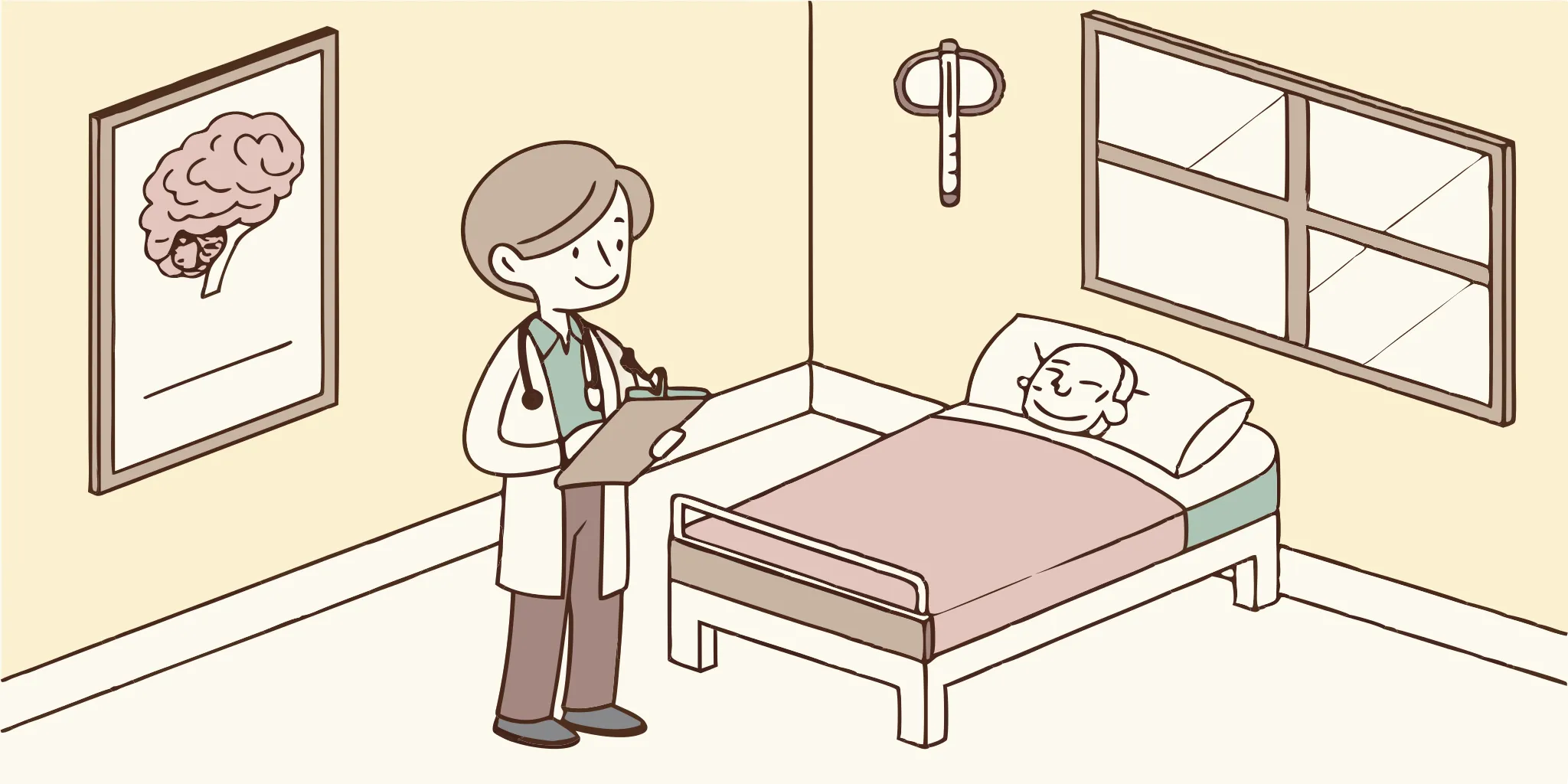Childhood is a time of immense emotional growth, and learning to manage big feelings is a crucial skill for navigating life’s ups and downs. But what happens when anxiety becomes overwhelming, impacting a child’s daily life and relationships? This introduction explores the complexities of anxiety and emotional regulation in children, offering practical guidance for parents and caregivers. We’ll discuss the signs of anxiety, the impact of untreated anxiety on a child’s well-being, and the importance of early intervention. We’ll also delve into the role of therapy in building emotional regulation skills, exploring various interventions and techniques, and highlighting the importance of professional support. Join us as we empower you with the knowledge and resources to help your child develop emotional resilience and thrive.
Key Takeaways
- Anxiety and emotional regulation challenges can significantly affect a child’s daily life: From sleep disturbances to strained relationships, understanding the impact of these challenges highlights the importance of early intervention and support.
- Therapy offers a safe and effective path to developing emotional regulation skills: Through personalized interventions and techniques, therapy equips children with the tools they need to manage their emotions, build resilience, and improve their overall well-being.
- Creating a supportive environment at home is crucial for a child’s emotional growth: Open communication, practical strategies, and consistent support from family members empower children to navigate emotional challenges and thrive.
What is Anxiety and Emotional Regulation in Children?
Anxiety in children shows up as excessive worry, fear, or nervousness. These feelings can be tied to a specific event, like a test at school, or be more general, like a persistent worry about the future. This can make everyday activities feel overwhelming and impact their overall well-being. Understanding anxiety in children is the first step in helping them manage it.
Emotional regulation is the ability to manage and respond to emotional experiences in a healthy way. It’s like having an inner toolbox of skills to understand and deal with feelings. Developing these emotional regulation skills is essential for kids, helping them navigate the ups and downs of life. When children struggle with emotional regulation, their anxiety can intensify, affecting their friendships, schoolwork, and mental health. Learning about emotional dysregulation can help you understand these challenges. Learning to recognize and manage emotions empowers kids to understand their triggers and develop coping strategies, giving them the tools they need to manage anxiety. Activities that promote emotional awareness, like talking about feelings or creative expression, can help children express themselves constructively. Explore some helpful activities to support your child’s emotional development.
How Untreated Anxiety Impacts Daily Life
When anxiety goes unaddressed, it can significantly affect a child’s daily life, impacting everything from their sleep to their relationships. Understanding these effects can help parents and caregivers recognize when a child needs support. Our article on conquering memory problems after head injury offers additional insights into the challenges children face.
Sleep Disturbances and Racing Thoughts
Anxiety often disrupts sleep. Children may struggle to quiet their racing thoughts, making it difficult to fall asleep or stay asleep. They might wake up frequently during the night or early in the morning, feeling exhausted and overwhelmed. This constant mental activity can leave them feeling drained and unable to focus during the day. One young girl shared how her mind wouldn’t stop racing at night, leading to many sleepless nights and a desperate need for help managing her thoughts. This difficulty quieting the mind is a common experience for children struggling with anxiety, often discussed in resources like our introductory audio guide on concussion recovery.
Mood Swings and Relationship Challenges
Untreated anxiety can also lead to significant mood swings. A child might go from calm to upset very quickly, reacting disproportionately to seemingly minor situations. This emotional volatility can strain relationships with family and friends, who may struggle to understand these rapid shifts in mood. One parent described how her daughter’s anxiety-driven mood swings created tension in their family as they struggled to find ways to support her. Fortunately, with appropriate help, children can learn to regulate their emotions and develop healthier ways of interacting with others. Kylee’s story of concussion recovery highlights how treatment helped her regain emotional stability and improve her relationships. For more information on early steps and strategies after a concussion, you can visit our resource page.
Recognize the Signs: When to Seek Help
Knowing when to seek professional help for a child struggling with emotional regulation is crucial. Early intervention can significantly impact their development and overall well-being. This section outlines key indicators that signal a need for additional support. Remember, these signs can manifest differently in each child, and consulting with a healthcare professional for personalized guidance is always best. Concussion Hub offers resources, such as our audio guide on navigating concussion recovery, to help you understand this complex issue.
Emotional Instability and Overwhelming Feelings
One of the most noticeable signs is emotional instability. This can present as exaggerated emotional responses disproportionate to the situation. For example, a minor frustration might trigger an intense outburst of anger or a prolonged period of sadness. Children might also experience overwhelming feelings of anxiety that are difficult to manage. These intense emotions can disrupt their daily life, affecting their ability to focus, learn, and interact with others. If your child experiences these challenges after a head injury, our article on memory problems after head injuries may offer additional insights.
Behavioral Changes and Social Difficulties
Alongside emotional instability, you might observe behavioral changes. A child might become increasingly irritable, withdrawn, or have difficulty engaging in activities they once enjoyed. They may also struggle with social interactions, leading to conflicts with peers and challenges in forming or maintaining friendships. These behavioral shifts can indicate the child is struggling to cope with their emotions and needs support developing healthier coping mechanisms. Our article on steps to take after a concussion provides practical advice for managing these challenges. For further information on memory problems related to concussions, our article decoding memory problems after concussion offers valuable information. For a personal perspective on concussion recovery, you can read about one individual’s recovery journey.
Therapy’s Role in Emotional Regulation
When a child struggles with emotional regulation, therapy offers valuable support and guidance. It provides a safe space for kids to explore their feelings, develop coping mechanisms, and build resilience. Therapeutic interventions can equip children with the tools they need to manage overwhelming emotions and navigate challenging situations.
Types of Interventions and Techniques
Therapy techniques focusing on emotion regulation skills can help children manage their emotions more effectively. Therapists often use a variety of approaches tailored to the child’s specific needs and developmental stage. These may include cognitive behavioral therapy (CBT) to help identify and change negative thought patterns, play therapy to express emotions through play, and mindfulness exercises to increase self-awareness. Self-soothing techniques like deep breathing or progressive muscle relaxation provide strategies to calm and regulate emotions when feeling overwhelmed. Emotional regulation activities can be incorporated into individual or group therapy sessions, offering practical tools for managing feelings in various settings.
Importance of Professional Support and Tailored Assistance
Developing emotional regulation skills is crucial for a child’s overall well-being. Therapy and active engagement in skill-building strategies can help children learn to understand and manage their emotions, leading to improved mental health, healthier relationships, and a greater sense of self-confidence. A trained mental health professional can offer valuable insights and strategies to enhance a child’s emotional regulation abilities. They can assess the child’s individual needs, develop a personalized treatment plan, and provide ongoing support throughout the process. This tailored approach ensures that the child receives the specific tools and guidance they need to thrive.
Break Down the Treatment Process
When it comes to helping kids manage big feelings, understanding the treatment process can empower parents and caregivers. It’s a collaborative journey involving the child, therapist, and family, focused on building emotional regulation skills. This section breaks down the key stages involved.
Initial Assessment and Goal Setting
The first step is a comprehensive assessment to understand the child’s emotional landscape. This often involves conversations with the child and parents, exploring emotional triggers, behavioral patterns, and any specific challenges they face. Think of it as creating a roadmap. What anxieties or emotional outbursts does the child struggle with? What situations tend to provoke these reactions? The goal is to gain a clear picture of the child’s emotional world. From this understanding, clear and achievable goals are set, tailored to the child’s unique needs. These goals might involve expanding their emotional vocabulary, learning practical coping strategies, or improving social skills to better handle emotional situations. For example, a child struggling with anger might set a goal to identify physical signs of anger and use a calming technique like deep breathing. Setting realistic goals provides a framework for the therapy and helps everyone stay focused.
Track Progress and Milestones
Just like any journey, it’s important to track progress and celebrate milestones. Regular check-ins with the therapist help assess how well the child is applying the emotional regulation strategies they’ve learned in real-life situations. These check-ins might involve discussions about recent challenges, role-playing different scenarios, or feedback from parents and teachers. Milestones could include successfully using a coping strategy during a stressful moment, expressing emotions more effectively, or demonstrating improved problem-solving skills. Recognizing these wins reinforces positive behavior and motivates the child to continue practicing and growing. It also provides valuable feedback for adjusting the treatment plan as needed, ensuring it remains relevant and effective for the child’s evolving needs.
Key Components of Effective Anxiety Management
Helping kids manage anxiety involves equipping them with practical tools and strategies. Effective anxiety management is a multi-faceted approach that empowers children to understand and regulate their emotions. This section explores some core components: developing coping strategies, building emotional resilience, and implementing mindfulness practices.
Develop Coping Strategies
Think of coping strategies as a toolbox filled with techniques kids can use when anxiety arises. These strategies can range from simple breathing exercises to engaging in a favorite hobby. The goal is to give kids a sense of control over their anxious feelings. Emotion regulation exercises offer tangible ways for kids to process and manage their emotions. Practicing these exercises in various settings, from individual therapy sessions to at home with family, builds confidence in their ability to handle challenging situations.
Build Emotional Resilience
Resilience is about learning to bounce back from difficult emotions. Building emotional resilience in children involves helping them develop self-awareness and understand their emotional responses. Therapy provides a safe space for kids to explore their feelings and develop healthy coping mechanisms. As kids become more attuned to their emotions, they can identify triggers and develop strategies to manage them. This fosters a sense of empowerment and helps kids face challenges.
Implement Mindfulness Practices
Mindfulness encourages kids to focus on the present moment without judgment, which can be particularly helpful for anxiety. Mindfulness practices, such as deep breathing exercises or guided meditations, can help kids calm their minds and bodies. Simple activities like taking a nature walk or listening to calming music can also promote mindfulness. By incorporating these practices into their routines, kids develop self-awareness and learn to manage anxious thoughts and feelings. Physical activity offers a valuable outlet for managing stress and regulating emotions, contributing to a holistic approach.
Measure Progress: What Do Positive Changes Look Like?
Seeing positive changes in a child recovering from a concussion can be incredibly encouraging. While every child’s journey is unique, some common signs indicate progress in emotional regulation. These improvements often have a ripple effect, influencing not only the child’s emotional well-being but also their relationships and overall quality of life.
Improved Emotional Control and Responses
One of the most noticeable signs of progress is improved emotional control. Children who previously struggled with impulsive reactions, quickly escalating from calm to upset, begin to demonstrate more balanced responses. For example, a child might learn to pause and take a breath before reacting to a frustrating situation. This increased self-regulation can lead to fewer emotional outbursts and a more even temperament. Kylie’s story, featured on Concussion Hub, offers a powerful example of this transformation. Initially prone to rapid mood swings, Kylie learned to manage her emotions, resulting in a more stable and positive demeanor. You can find more details about Kylie’s recovery and how she learned to manage her emotional responses.
Enhanced Sleep Patterns and Overall Well-being
Improved sleep is another key indicator of progress. Concussions can disrupt sleep patterns, causing difficulty falling asleep, staying asleep, or experiencing restful sleep. As emotional regulation improves, children often experience a return to healthier sleep habits. They may find it easier to quiet their minds at night, fall asleep more quickly, and wake up feeling refreshed. This improvement in sleep quality contributes to better emotional regulation, cognitive function, and overall well-being. In Kylie’s case, improved sleep was a significant marker of her recovery, allowing her to feel more rested and better equipped to handle daily challenges. Our audio guide offers additional information on sleep and concussion recovery. For early steps and strategies after a concussion, review this article.
Stabilized Mood and Relationships
Finally, positive changes in mood and relationships are important indicators of progress. As children gain better control over their emotions, their moods become more stable. They experience fewer mood swings and are generally more content and engaged. This emotional stability also positively impacts their relationships with family and friends. They are better able to connect with others, navigate social situations, and build stronger bonds. Kylie’s experience highlights the importance of a supportive environment in fostering emotional stability. Connecting with peers facing similar challenges provided her with encouragement and a sense of belonging, further contributing to her emotional well-being. Explore more about the impact of concussions on relationships and strategies for building a supportive environment in our article on memory problems after a head injury. You can also learn more about memory problems after concussions in this article.
The Ripple Effect: How Improved Emotional Regulation Impacts Families
When children learn to manage their emotions, it creates positive changes that extend far beyond their individual well-being. These improvements ripple outwards, significantly impacting family dynamics and creating a more supportive home environment.
Restore Family Dynamics
Think of emotional regulation as a cornerstone of healthy family relationships. When a child struggles to manage big feelings, it can lead to increased conflict, communication breakdowns, and strained interactions. As children develop stronger emotional regulation skills, they’re better equipped to communicate their needs and perspectives calmly and respectfully. This allows parents to understand and respond more effectively, reducing misunderstandings and arguments. Families that practice emotional regulation together build stronger bonds, learning to empathize with and support one another’s emotional experiences. This creates a more harmonious home life, where everyone feels understood. Improved emotional regulation can lead to reduced conflicts and better communication within the family.
Improved emotional regulation also paves the way for more positive interactions. When children feel more in control of their emotions, they’re more likely to engage in cooperative play, show empathy towards siblings, and participate in family activities with a more positive attitude. This shift can transform the family dynamic, creating a more enjoyable and connected experience for everyone. Engaging in emotional regulation practices strengthens family relationships.
Create a Supportive Environment
Parents play a vital role in fostering emotional regulation in their children. Creating a supportive and understanding environment is essential for kids to practice and develop these crucial skills. When parents model healthy emotional responses, children learn by observing and imitating their behavior. Providing a safe space for children to express their feelings without judgment encourages them to explore their emotions and develop healthy coping mechanisms. A supportive environment is crucial for children to practice emotional regulation.
A nurturing environment that prioritizes emotional well-being benefits the entire family. When emotional health is valued and supported, it creates a sense of security and trust within the home. This fosters resilience and emotional intelligence in all family members, equipping them to handle life’s challenges with greater ease. Prioritizing emotional well-being creates a nurturing environment that can lead to improved mental health outcomes for all family members.
Overcome Stigma: Encourage Open Conversations About Mental Health
One of the biggest hurdles to getting kids the help they need for emotional regulation challenges is overcoming the stigma surrounding mental health. Many families feel uncomfortable discussing these issues, preventing children from seeking support. It’s crucial to create a safe and open environment where kids understand that experiencing big emotions is normal, and asking for help is a sign of strength.
Break Down Barriers to Seeking Help
Emotional dysregulation can significantly impact a child’s life, affecting their relationships and school performance. Encouraging open communication about feelings creates a space where kids feel comfortable expressing their struggles. Talking openly about mental health normalizes the experience and helps children understand that seeking help is a positive step. Rula’s guide on emotional dysregulation discusses fostering an environment where children feel safe expressing their emotions, helping them understand that seeking help is a sign of strength. Choosing Therapy emphasizes the importance of caregivers modeling these conversations, showing kids that discussing feelings and seeking support is okay.
Promote Understanding and Acceptance
Promoting understanding and acceptance of emotional regulation empowers children to manage their feelings effectively. Teaching kids that everyone experiences intense emotions, and that talking about them is okay, builds resilience. Life Path Therapy’s insights on building emotional regulation skills highlight the importance of normalizing these conversations. Therapy by Pro suggests engaging in activities that promote emotional regulation, helping children articulate their feelings and develop coping mechanisms. This aids their emotional development and normalizes conversations around mental health. Anxiety.org discusses creating an environment of understanding and acceptance, where children learn that emotional regulation is a vital skill everyone can develop, further reducing stigma.
Take Action: Steps Towards Emotional Well-being for Children
Helping children develop strong emotional regulation skills is a journey, and taking proactive steps can make a significant difference. Here’s how to start:
Seek Professional Help
Connecting with a therapist is crucial. Therapists offer personalized guidance and use evidence-based techniques like cognitive behavioral therapy (CBT) to help your child understand and manage their emotions. Therapy provides a safe space for children to explore their feelings and develop healthy coping mechanisms. Resources on emotion regulation skills and strategies can help you understand the process. Finding the right therapist is a key first step.
Implement Supportive Strategies at Home
Parents play a vital role in supporting their child’s emotional development. Creating a calm and predictable home environment can reduce anxiety. Incorporate simple emotion regulation activities into your daily routine, such as deep breathing exercises, mindfulness practices, or journaling. Open conversations about feelings can help normalize emotional expression. Concussion Hub offers additional resources on managing the emotional impact of concussions.
Embrace the Journey to Emotional Balance
Remember, developing emotional regulation skills takes time and patience. It’s not a quick fix, but an ongoing process of learning and growth. Celebrate small victories and acknowledge setbacks as learning opportunities. By working with a therapist and implementing strategies at home, you can equip your child with the tools they need to build emotional resilience and achieve emotional well-being. For further support, explore Concussion Hub’s audio guide on navigating concussion recovery.
Related Articles
- Understanding Emotional Changes After Concussion – Concussion Hub
- Overcoming Post-Concussion Anxiety: A Practical Guide – Concussion Hub
- Concussion & Emetophobia: Managing Fear During Recovery – Concussion Hub
- Concussion Recovery: Managing the Emotional & Cognitive Challenges – Concussion Hub
- Recognizing Concussion Symptoms: A Practical Guide – Concussion Hub
Frequently Asked Questions
How can I tell if my child’s anxiety is serious enough to warrant professional help? Persistent worries, difficulty sleeping, significant mood swings, and changes in behavior or social interactions can all be indicators that a child’s anxiety requires professional attention. If their anxiety is interfering with their daily life, it’s a good idea to consult with a therapist or healthcare provider.
What kind of therapy is most effective for children with anxiety and emotional regulation challenges? Several therapeutic approaches can be helpful, and the most effective approach depends on the individual child’s needs. Cognitive Behavioral Therapy (CBT), play therapy, and mindfulness-based techniques are often used to help children understand and manage their emotions. A qualified therapist can assess your child and recommend the most appropriate approach.
What can I do at home to support my child’s emotional regulation? Creating a structured and predictable home environment can be helpful. Encourage open communication about feelings, and model healthy emotional responses yourself. Practice simple relaxation techniques together, like deep breathing or mindfulness exercises. Incorporating activities that your child enjoys can also provide a positive outlet for emotions.
How long does it typically take to see improvements in a child’s emotional regulation? Developing emotional regulation skills is an ongoing process, and the timeframe for improvement varies depending on the individual child and the specific challenges they face. With consistent effort and appropriate support, you should start to see positive changes over time. Remember to celebrate small victories and be patient with the process.
What role does the family play in a child’s emotional regulation journey? Families play a crucial role in creating a supportive environment where children can learn and practice emotional regulation skills. Open communication, consistent routines, and modeling healthy emotional responses are all important. Family therapy can also be beneficial in addressing family dynamics and strengthening relationships.






